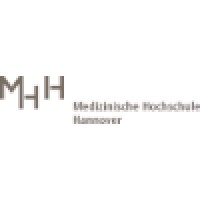Company Cyber Security Posture
NANA
NA Company Details
NA
NA
NA
NA
NA
NA
Scan still pending
NA
NA
Between 200 and 800
This score is AI-generated and less favored by cyber insurers, who prefer the TPRM score.
 NA Global Score
NA Global Score.png)

Company Scoring based on AI Models
| Model Name | Date | Description | Current Score Difference | Score |
|---|---|---|---|---|
| AVERAGE-Industry | 03-12-2025 | This score represents the average cybersecurity rating of companies already scanned within the same industry. It provides a benchmark to compare an individual company's security posture against its industry peers. | N/A | Between 200 and 800 |
Company Cyber Security News & History
| Entity | Type | Severity | Impact | Seen | Url ID | Details | View |
|---|
Company Subsidiaries

NA
Access Data Using Our API

Get company history
.png)
NA Cyber Security News
Shalendra Singh
Shalendra Singh, head of IT at Hungry Lion, is propelling the brand into an exciting phase. 18 October 2023. Interviews · CIO Andrew Britz navigates the ...
Dr Denisha Jairam-Owthar
My PhD gave me credibility on the board, says Dr Denisha Jairam-Owthar. Denisha was once named the youngest person to complete a PhD in IT. 08 ...

NA Similar Companies

University of Minnesota
One of the nation’s largest schools, the University of Minnesota offers baccalaureate, master’s, and doctoral degrees in virtually every field—from medicine to business, law to liberal arts, and science and engineering to architecture. The University of Minnesota system is made up of five campuses

University of Southern California
The University of Southern California is a leading private research university located in Los Angeles, the capital of the Pacific Rim. This is the official LinkedIn presence for the University of Southern California. This account is managed and mediated by the staff of USC University Communications

The University of Alabama
The University of Alabama is a student-centered research university and an academic community committed to enhancing the quality of life for all through breakthrough research. Founded in 1831 as Alabama's first public college, The University of Alabama is dedicated to excellence in teaching, resea

Universidad de Caldas
Universidad colombiana pública, certificada y reacreditada de alta calidad. Fundada en 1943, hoy cuenta con 70 años de historia y con una oferta de pregrados, especializaciones, maestrías y doctorados desde sus facultades de Ciencias para la Salud; Ciencias Agropecuarias; Artes y Humanidades; Cie

Hannover Medical School
Hannover Medical School (MHH), with around 10,000 employees the largest state enterprise in Lower Saxony, is a university institution for research and teaching in human medicine and dentistry and a university hospital providing supramaximal care. Research, teaching, patient care and administration w

Baylor College of Medicine
Baylor College of Medicine is a health sciences university that creates knowledge and applies science and discoveries to further education, healthcare and community service locally and globally. Located in the Texas Medical Center, Baylor College of Medicine has affiliations with eight teaching hosp

Frequently Asked Questions
Explore insights on cybersecurity incidents, risk posture, and Rankiteo's assessments.
NA CyberSecurity History Information
How many cyber incidents has NA faced?
Total Incidents: According to Rankiteo, NA has faced 0 incidents in the past.
What types of cybersecurity incidents have occurred at NA?
Incident Types: The types of cybersecurity incidents that have occurred include .
Additional Questions
What Do We Measure?
















Every week, Rankiteo analyzes billions of signals to give organizations a sharper, faster view of emerging risks. With deeper, more actionable intelligence at their fingertips, security teams can outpace threat actors, respond instantly to Zero-Day attacks, and dramatically shrink their risk exposure window.
These are some of the factors we use to calculate the overall score:
Identify exposed access points, detect misconfigured SSL certificates, and uncover vulnerabilities across the network infrastructure.
Gain visibility into the software components used within an organization to detect vulnerabilities, manage risk, and ensure supply chain security.
Monitor and manage all IT assets and their configurations to ensure accurate, real-time visibility across the company's technology environment.
Leverage real-time insights on active threats, malware campaigns, and emerging vulnerabilities to proactively defend against evolving cyberattacks.




